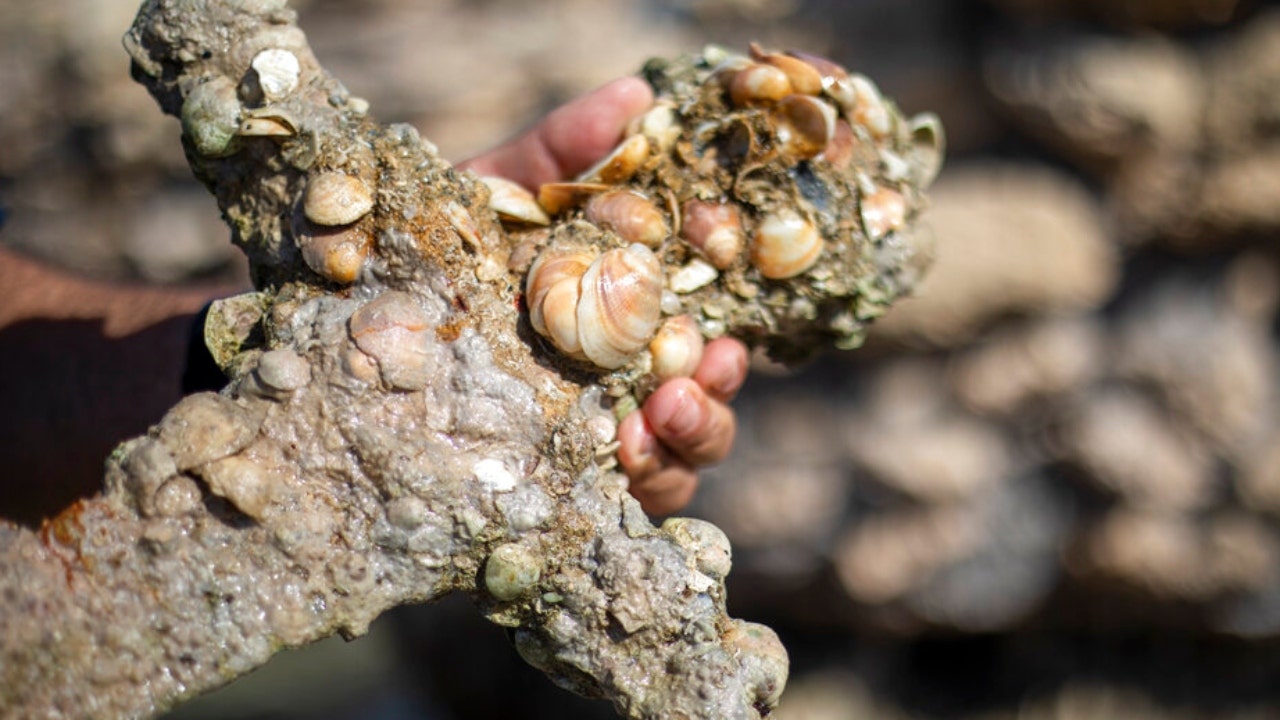California beaches near oil spill see ‘tar balls’: reports

California officials say tar balls have been seen on local beaches following the oil spill in Orange County last weekend.
The Golden State’s Department of Fish and Wildlife describes the tar balls as small, dark and often sticky remnants of oil spills or natural oil seeps in bodies of water.
CALIFORNIA OIL PIPELINE LEAK: MYSTERY CONTINUES TO SWIRL AROUND CAUSE
The agency explained that as winds and waves break an oil slick into smaller patches, various physical, chemical and biological processes change the appearance of the oil by a process called “weathering.”
The formation of tar balls occurs as the oil patches are broken into smaller pieces.
While tar balls range in size, they are generally less than 10 centimeters in diameter – alternatively, tar patties are larger – and the balls can travel hundreds of miles from the original oil release point.
The department said the tar balls are “like a toasted marshmallow” — often hard and crusty on the outside and soft and gooey on the inside. Fresh tar balls appear more like drops of molasses.
Both the temperature of the tar ball and the amount of particulates and sediments present in the water or on shore can impact the stickiness of the tar ball.
The number of tar balls that wash up on shore depends on wind patterns, sea currents, marine traffic, how often the beach was cleaned and whether the source was an oil spill or seep that happened recently.
While tar balls on the shore may be picked up by hand, oil contains hazardous chemicals and members of the public are advised to avoid contact with the tar balls.
CARGO SHIP NEAR CALIFORNIA PIPELINE MADE STRANGE MOVEMENTS: REPORT
If contact with skin occurs, individuals are instructed to wash the area with soap and water or baby oil and avoid using solvents, gasoline, kerosene or diesel fuel on the skin.
Wildlife may also pick up tar balls, which could result in a loss of waterproofing, life-threatening exposure to the cold or the ingestion of hazardous materials.
“If you see tar balls, oil slicks or wildlife affected by #oilspill please don’t touch them,” the City of Carlsbad tweeted Thursday. “Let the experts know at .”
The tar balls have also been spotted in San Diego, Oceanside, Del Mar and Encinitas as the crude oil moves southward, according to Fox 5, though the link has yet to be 100% confirmed.
Tens of thousands of gallons of crude oil were spilled due to a leak in an underwater Amplify Energy pipeline, closing the ocean and shoreline of Huntington Beach and other communities.
While the cause of the leak remains under investigation, video of the ruptured pipeline released by the U.S. Coast Guard showed a thin, 13-inch-long crack, and federal transportation investigators said preliminary reports suggest the failure may have been “caused by an anchor that hooked the pipeline, causing a partial tear.”
CLICK HERE TO GET THE FOX NEWS APP
This is not the first time that tar balls have dotted southern California’s beaches.
In 1999 an undersea pipeline that leaked at least 3,800 gallons oil caused tar balls to wash up on Orange County beaches, and tar balls washed up at Newport and Huntington beaches in 2016 from natural offshore seepage.
The Associated Press contributed to this report.




